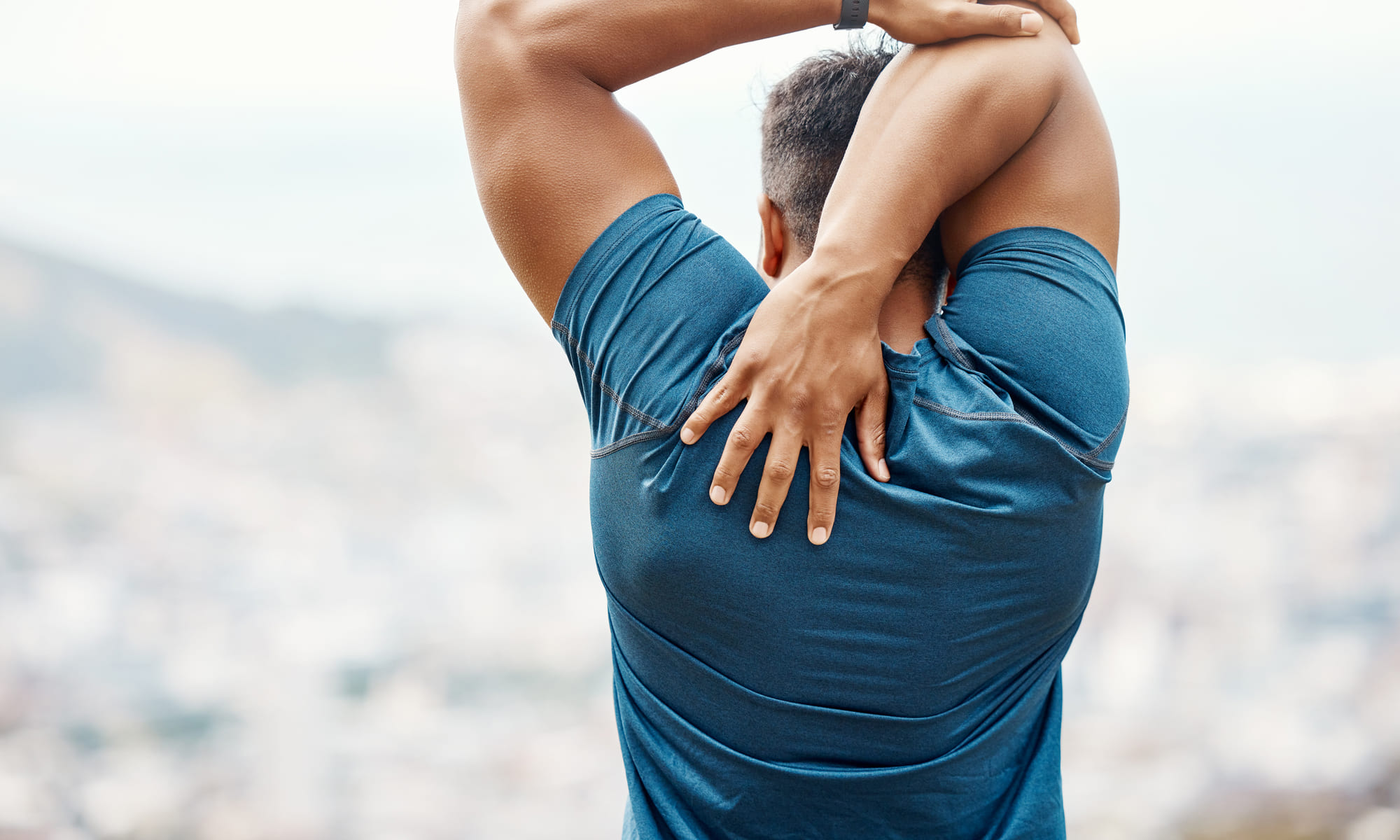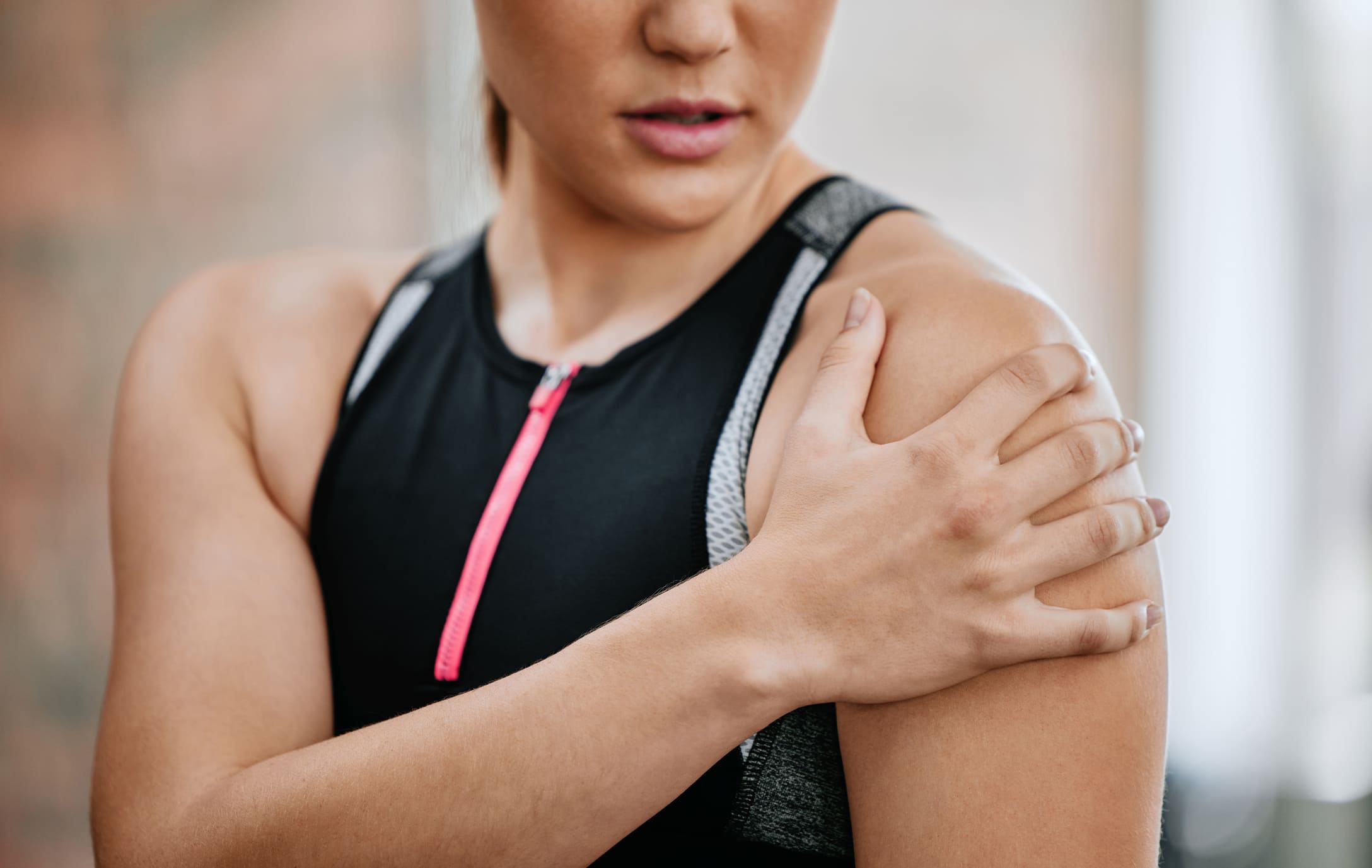Top Categories
The rotator cuff is a complex structure composed of four muscles – the supraspinatus, infraspinatus, teres minor, and subscapularis. It enables a wide range of movements, including lifting and rotating the arm. A strong rotator cuff not only promotes overall shoulder health but also aids in injury prevention and recovery following injury or surgery.
Preparation for Exercise
Before starting a new exercise regimen, particularly if you have a history of shoulder injuries or are recovering from surgery, consult a sports injury specialist or qualified professional. They can provide personalised advice based on your health status and ensure the exercises are safe and effective for you.
The equipment needed for these exercises includes a light dumbbell or resistance band, and a stable surface like a table or a doorknob.
Exercises to Strengthen Your Rotator Cuff
Pendulum Swing
Muscles targeted: Deltoids, supraspinatus, infraspinatus, subscapularis
Equipment needed: None
Sets and repetitions: 2 sets of 10, 5 to 6 days per week
Instructions: Lean forward and place one hand on a table for support. Let your other arm hang freely at your side. Gently swing your arm forward and back, then side-to-side, and finally in a circular motion. Repeat the sequence with the other arm.
Tips: Do not round your back or lock your knees while performing this exercise.
Crossover Arm Stretch

Muscles targeted: Posterior deltoid
Equipment needed: None
Sets and repetitions: 4 each side, 5 to 6 days per week
Instructions: Relax your shoulders and gently pull one arm across your chest as far as possible, holding at your upper arm. Hold the stretch for 30 seconds and then relax for 30 seconds. Repeat with the other arm.
Tips: Do not pull or put pressure on your elbow.
Passive Internal Rotation
Muscles targeted: Supraspinatus
Equipment needed: Light stick, such as a yardstick
Sets and repetitions: 4 each side, 5 to 6 days per week
Instructions: Hold a stick behind your back with one hand, and lightly grasp the other end of the stick with your other hand. Pull the stick horizontally so that your shoulder is passively stretched to the point of feeling a pull without pain. Hold for 30 seconds and then relax for 30 seconds. Repeat on the other side.
Tips: Do not lean over or twist to the side while pulling the stick.
Passive External Rotation
Muscles targeted: Infraspinatus, teres minor
Equipment needed: Light stick, such as a yardstick
Sets and repetitions: 4 each side, 5 to 6 days per week
Instructions: Grasp the stick with one hand and cup the other end of the stick with the other hand. Keep the elbow of the shoulder you are stretching against the side of your body and push the stick horizontally, to the point of feeling a pull without pain. Hold for 30 seconds and then relax for 30 seconds. Repeat on the other side.
Tips: Keep your hips facing forward and do not twist.
Sleeper Stretch
Muscles targeted: Infraspinatus, teres minor
Equipment needed: None
Sets and repetitions: 4 reps, 3 times a day, daily
Instructions: Lie on your side on a firm, flat surface with the affected shoulder under you and your arm bent. Use your unaffected arm to push your other arm down. Stop pressing down when you feel a stretch in the back of your affected shoulder. Hold this position for 30 seconds, then relax your arm for 30 seconds.
Tips: Do not bend your wrist or press down on your wrist.
Standing Row
Muscles targeted: Middle and lower trapezius
Equipment needed: Elastic stretch band of comfortable resistance
Sets and repetitions: 3 sets of 8, 3 days per week
Instructions: Make a 3-foot-long loop with the elastic band and tie the ends together. Attach the loop to a doorknob or other stable object. Stand holding the band with your elbow bent and at your side. Keep your arm close to your side and slowly pull your elbow straight back. Slowly return to the start position and repeat.
Tips: Squeeze your shoulder blades together as you pull.
External Rotation with Arm Abducted 90°
Muscles targeted: Infraspinatus and teres minor
Equipment needed: Light dumbbell
Sets and repetitions: 2 sets of 10, 3 days per week
Instructions: Lie on your back and hold a dumbbell in your hand. Keep your elbow bent at 90 degrees and your arm out to the side at shoulder level. Slowly raise your hand until it’s pointing toward the ceiling. Then slowly lower it to the start position and repeat.
Tips: Keep your elbow at shoulder level and your wrist straight.
Internal Rotation
Muscles targeted: Subscapularis
Equipment needed: Elastic stretch band of comfortable resistance
Sets and repetitions: 2 sets of 10, 3 days per week
Instructions: Attach the band to a doorknob or other stable object. Stand sideways to the door with your affected arm closer to the door. Bend your elbow 90 degrees and keep your elbow at your side. Start with your hand in front of your stomach and slowly pull your hand across your body. Slowly return to the start position and repeat.
Tips: Keep your elbow at your side.
Doorway Stretch
Muscles targeted: Pectoralis major and minor
Equipment needed: None
Sets and repetitions: 4 reps, 3 times a day, daily
Instructions: Stand in an open doorway. Reach your arms up to touch the doorway. Keeping your hands on the doorway, step forward until you feel a stretch in the front of your shoulders. Hold for 30 seconds. Then step back and relax for 30 seconds.
Tips: Keep your back straight and do not lean forward or backward.
Side-Lying External Rotation
Muscles targeted: Infraspinatus, teres minor
Equipment needed: Light dumbbell
Sets and repetitions: 2 sets of 10, 3 days per week
Instructions: Lie on your side on a firm, flat surface. Keep your bottom arm bent, elbow at your side, and your forearm resting against your chest, holding a dumbbell. Raise the dumbbell toward the ceiling and then slowly lower it. Repeat.
Tips: Keep your elbow against your side.
High-to-Low Rows
Muscles targeted: Lower trapezius
Equipment needed: Elastic stretch band of comfortable resistance
Sets and repetitions: 2 sets of 10, 3 days per week
Instructions: Attach the band to something sturdy at or above shoulder height. Kneel down and hold the band with your arm extended. Pull your elbow down to your side. Return to the start position and repeat.
Tips: Keep your back straight and squeeze your shoulder blades together as you pull.
Reverse Fly
Muscles targeted: Posterior deltoid, middle trapezius
Equipment needed: Light dumbbells
Sets and repetitions: 2 sets of 10, 3 days per week
Instructions: Stand and lean forward slightly, holding a dumbbell in each hand. With your elbows slightly bent, raise your arms out to the sides and squeeze your shoulder blades together. Then lower the dumbbells slowly and repeat.
Tips: Keep your back straight and do not lock your elbows.
Lawn Mower Pull
Muscles targeted: Latissimus dorsi, rhomboids
Equipment needed: Elastic stretch band of comfortable resistance
Sets and repetitions: 2 sets of 10, 3 days per week
Instructions: Step on one end of the band. With your other hand, pull the band up and across your body. Slowly return to the start position and repeat.
Tips: Keep your back straight and squeeze your shoulder blades together as you pull.
Incorporating These Exercises into Your Routine
Perform these exercises 3 to 5 times per week, depending on your comfort level and doctor’s advice. As your strength improves, you can increase the resistance of the bands or the weight of the dumbbells.
Signs of overexertion or injury to watch out for include:
Persistent or Sharp Pain During or After Exercising: While some muscle soreness is normal after a workout, persistent or sharp pain is not. If you experience ongoing pain that doesn’t improve with rest, or if the pain is sharp and severe, this could indicate an injury such as a strain or tear in the rotator cuff.
Swelling in the Shoulder: Swelling or inflammation in the shoulder area can be a sign of overuse or injury. This could be due to an acute injury or a chronic condition like tendinitis. Swelling is usually accompanied by pain and can limit your range of motion.
Decreased Range of Motion After Exercising: If you notice that your shoulder’s range of motion is reduced after exercising—meaning that you can’t move your arm as freely or as far as usual—this could be a sign of overexertion or injury. This might be due to inflammation, swelling, or a more serious injury such as a rotator cuff tear.
Weakness in the Arm: If your arm feels weak when you try to lift objects, raise your arm, or perform other normal activities, this could be a sign of a rotator cuff injury. Weakness might be due to muscle fatigue from overexertion, or it could be a sign of a more serious problem like a rotator cuff tear.
Bruising Around the Shoulder: Bruising around the shoulder can occur if you’ve had a direct blow to the area, but it can also be a sign of a more serious injury like a rotator cuff tear. If you notice bruising along with pain, swelling, or a decreased range of motion, it’s important to seek medical attention.
Conclusion
Regular exercise aimed at strengthening the rotator cuff can aid in preventing injuries and improving mobility. Before starting a new exercise regimen, seek guidance from a sports injury specialist or qualified professional. Their professional advice ensures correct and safe execution of exercises, reducing injury risk and enhancing the effectiveness of the regimen.

